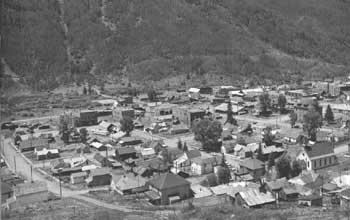






Survey of Historic Sites and Buildings
 |
SILVERTON-TELLURIDE MINING DISTRICT Colorado |
 |
| ||
Ownership and Administration. Various.
Significance. In the early 1870's prospectors found silver in the Silverton area and by the end of 1873 had staked out nearly 4,000 claims. The area did not boom, however, until the following year, when a treaty with the Ute Indians made it safe for miners to enter the area. Soon the towns of Silverton, Mineral Point, Animas Fork, Eureka, and Howardsville dotted the hillsides and valleys of the San Juan Basin. In 1876 miners founded Telluride, 15 miles north of Silverton, but it grew slowly until the narrow gauge Rio Grande Southern Railroad passed through in 1890. It then became one of the busiest gold-mining camps in Colorado. For a time its population was 5,000. Silverton and Telluride were the principal towns in the area, which was rich in gold, silver, lead, and copper. Silverton and Telluride have each been accorded Landmark status, but are treated here collectively because of their proximity and historical relationship.
 |
| Telluride, Colorado, today. Silverton and Telluride were the principal towns in a historic mining area rich in gold, silver, lead, and copper. |
Present Appearance. A few of the mines in the Silverton-Telluride district are still operating. Of the many mining camps and towns in the district, Silverton has the most impressive early buildings, including the Imperial Hotel (1882); the Methodist Church (1881); the gold-domed courthouse (1907); and the City Hall (1908). [15]
NHL Designation: 07/04/61
 |
 |
http://www.cr.nps.gov/history/online_books/prospector-cowhand-sodbuster/sitec8.htm
Last Updated: 22-May-2005